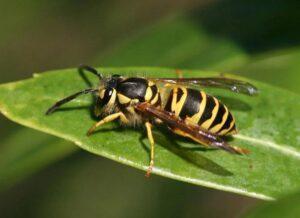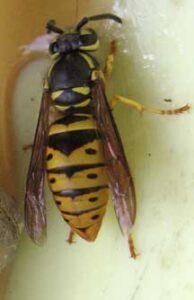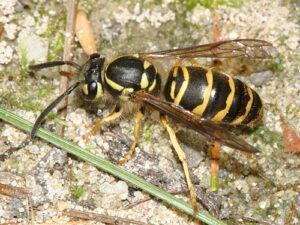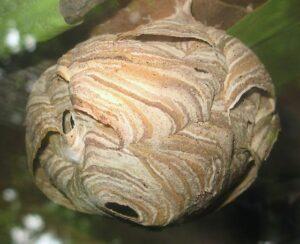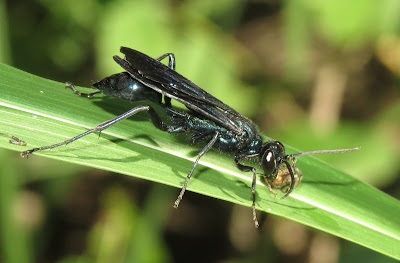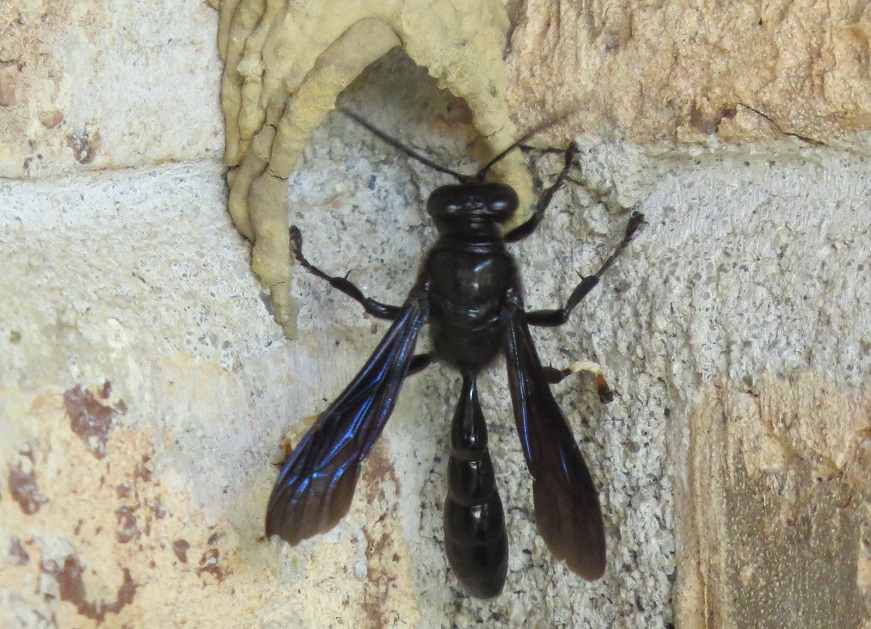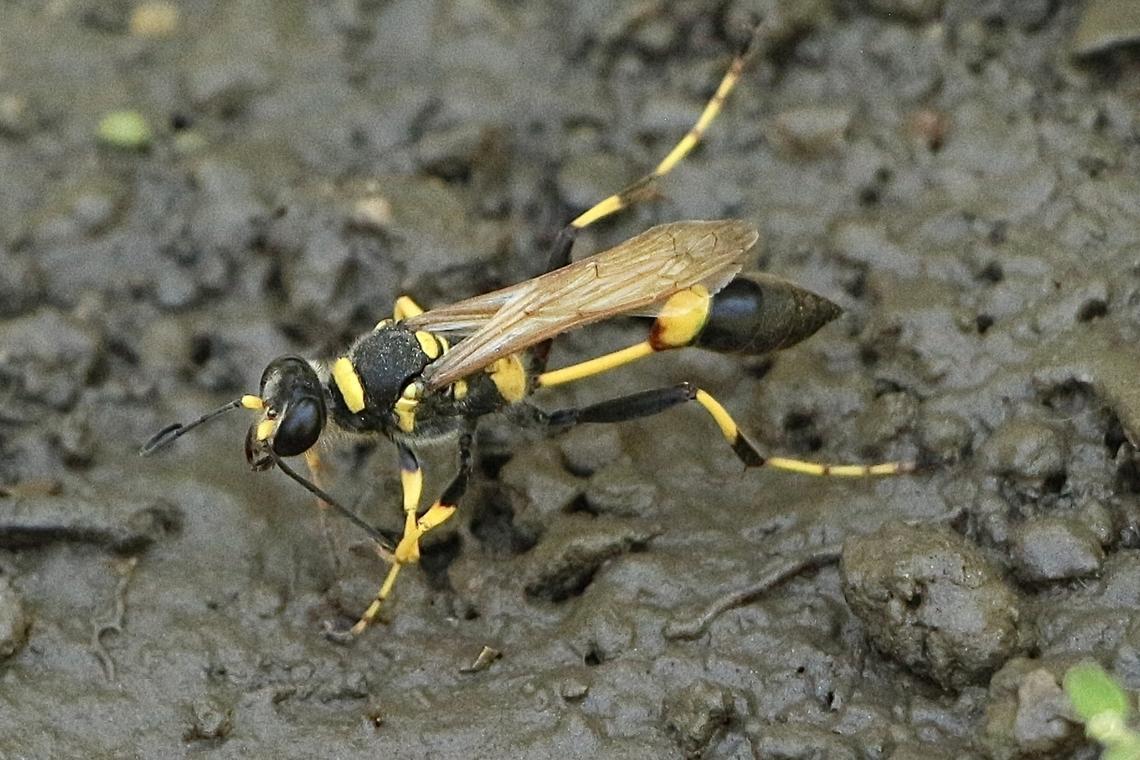Eastern Yellowjacket (Vespula maculifrons)
Updated on
17/11/2022The eastern yellowjacket is a wasp living in eastern North America. Being a social insect, it lives in colonies of hundreds to thousands. The species exhibits care for the young, overlapping generations, and separation of the reproductive and sterile castes. They inflict very painful stings.
Scientific Classification
- Class:Insecta
- Order:Hymenoptera
- Family:Vespidae
- Genus:Vespula
- Species:V. maculifrons
Conservation Status
Description
The average size of the wasp is 0.5-0.625 in (12.7-15.9 mm) with a weight of around 0.0014 oz (0.04 g). There are black and yellow lines on its head, thorax, and abdomen. The curved body is wider at the head, with the abdomen narrowing at its joining with the thorax. The thorax is thinner than the abdomen.
The queens are the biggest (up to 18 mm), followed by the males and the workers that are the smallest. The abdominal lines differ with the castes. The queen sports a black line flared at the nearest point to the thorax. It is followed by thinner black lines. There are two black dots between each black line.
Distribution: All through eastern North America and the Great Plains.
Habitat: Creek banks, hardwood forests, urban and suburban areas.
Do They Bite/Sting: Yes.
Lifespan: Around 1 year.
Predators: Black bears, raccoons, skunks, and bald-faced hornets.
Behavior and Characteristics
Diet
The eastern yellowjacket lives on a variety of foods. Dead insects like earwigs, fall webworm larvae and live arthropods form its diet. It also extracts nectar, honeydew, and juices of fruits for its food.
Social System
In spring, the queen decides where the colony will be made. It consists of 3 types of individuals, queens, workers, and males. The lone queen mates earlier in the year, spends the winter in diapause, and forms the colony by raising the first batch of workers. Till an offspring grows into an adult, the queen lays eggs, forages, defends the nest, and takes care of the young. The workers mature to expand and protect the nest while the queen continues reproducing. The colony dies when winter arrives, and only a few queens survive to start a new colony in the next nesting cycle.
Nest-building
The paper nests are made by chewing wood and mixing it with saliva to prepare a quick-drying pulp. The subterranean nests or hives are close to the surface, mostly covered with less than 2 in soil. Though most are under the ground, the insect is considered a pest as it sometimes nests above the ground in buildings and recreational areas. It aggressively defends its hive from possible danger.
The nest is 3.7-11.8 in (94-300 mm) in diameter. A big hive can have 10,000-15,000 cells, with the larger queen cells making up a little less than a third of it. The queen lays eggs in these cells that hatch into workers. The nest enlarges quickly with the addition of new cells as soon as the workers emerge from the larval stage. The nest’s envelope is tan-brown to red-orange and is built of decaying, worn-out wood that makes it fragile.
Comparison with Similar Species
The southern yellowjacket (Vespula squamosa) queen is orange in color and bigger.
German Yellow Jacket
The German yellow jacket (Vespula germanica) frequently nests in attics, wall voids, crawlspaces, and other enclosed cavities in buildings and not underground. It is more aggressive in its nest defense.
Getting Rid of Eastern Yellowjackets
A colony can be killed by dusting the opening of the nest with insecticide during nighttime without disturbing the insects. But it needs the courage to face the huge population of a colony if things don’t go as planned. So it is best to get the nests removed by professional pest control.
Source
i0.wp.com, whatsthatbug.com, bugguide.net




